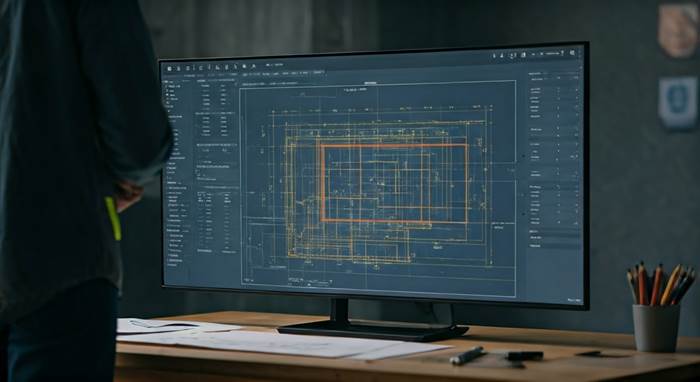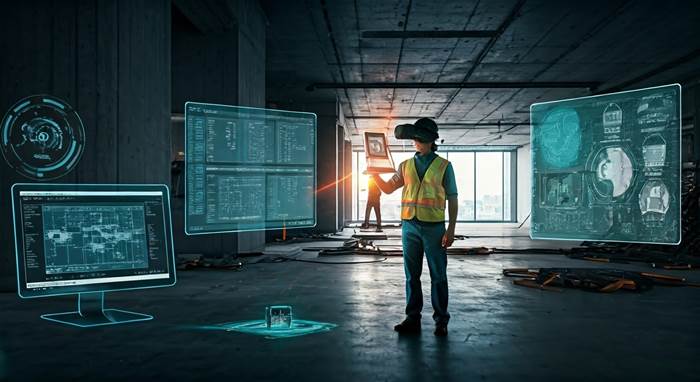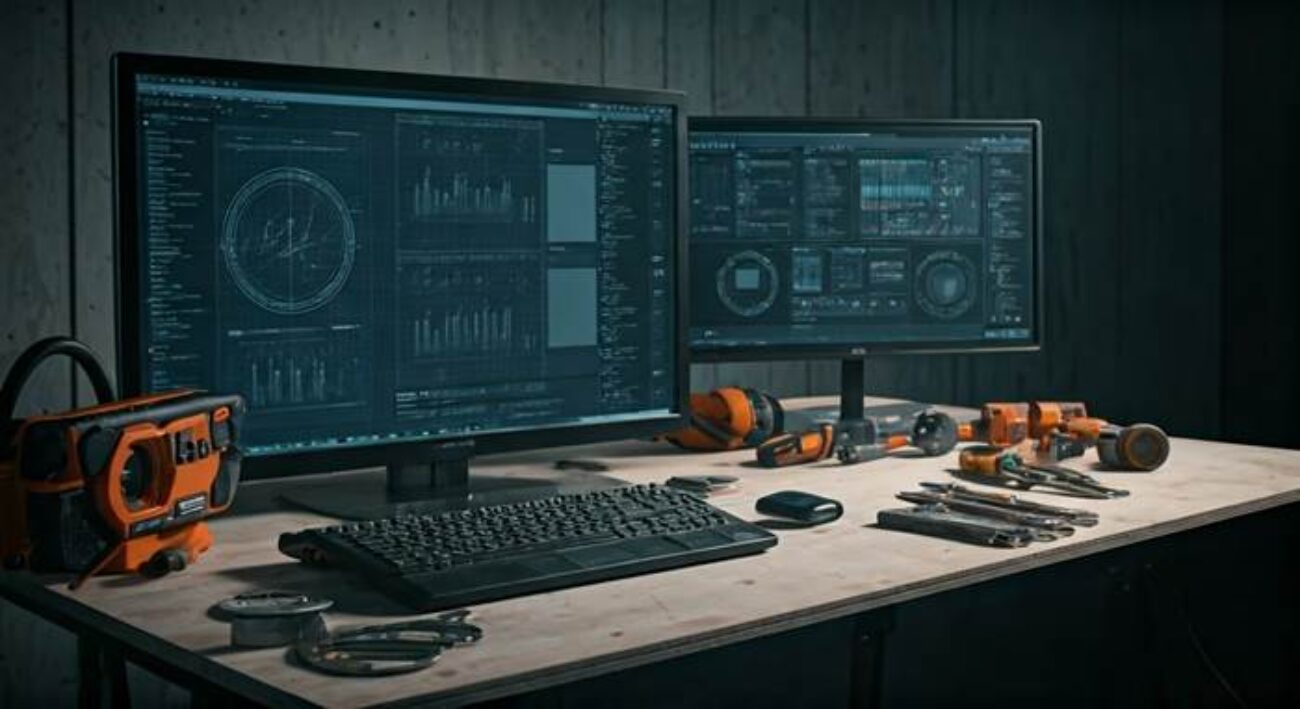Key Highlights
- Discover crucial tools like BIM software and clash detection software that are indispensable for effective MEP clash resolution.
- Learn how these tools streamline coordination among project stakeholders, minimize costly on-site conflicts, and contribute to efficient project delivery.
- Explore the importance of collaboration platforms, cloud-based storage, and mobile field management apps in fostering seamless communication and real-time project updates.
- Understand how advanced technologies, such as VR and AI, are transforming traditional MEP clash resolution approaches and paving the way for more efficient construction processes.
- This blog post provides insightful information for MEP professionals, project managers, and anyone involved in large-scale construction projects looking to leverage technology for optimized clash resolution.
Introduction
The construction industry is changing a lot due to new technology. These advancements are changing how work gets done. One big change is the use of BIM tools. These tools for MEP clash resolution are very helpful, especially for managing MEP (Mechanical, Electrical, and Plumbing) systems in large projects. Using BIM tools helps in finding and fixing clashes early. This cuts down on expensive rework and helps projects run more smoothly.

What are MEP Coordination Services?
MEP coordination services are very important for integrating MEP design parts in a building or infrastructure project. This process joins together different teams, like MEP engineers, architects, and structural engineers. They work together to make sure all systems fit well and work smoothly without any problems. Early collaboration among these teams is key for good MEP coordination.
By utilizing MEP systems integration and the best tools for MEP clash resolution, MEP coordination services can help avoid expensive rework, delays in the project, and safety risks. The coordination process uses advanced software to create a 3D model. This model shows the planned design and how all MEP components relate to each other in space.
The Role of MEP Coordination in Building Projects
MEP coordination is very important in construction. It helps combine MEP systems to create safe, useful, and energy-saving buildings. To succeed, we need careful planning and good communication. We also use advanced tools to find and fix conflicts between different building systems.
This is key for building structures that satisfy both functional needs and the comfort of those inside. It also helps save energy and cut long-term costs. By solving possible issues early in the design stage, effective MEP systems integration and coordination with the best tools for MEP clash resolution allows for a smooth construction process and a successful project overall.
Key Components of MEP Coordination
MEP coordination is all about bringing together different parts of a building into one working MEP model. This job requires teamwork between several groups to make sure every system, like HVAC, electrical, plumbing, and fire protection, fits well with the building’s design and structure.
The key to doing this well is to use good BIM software. This software helps people see, analyze, and organize how the systems fit together in the space. By solving potential conflicts early, MEP coordination helps reduce rework on-site, cuts down on material waste, and keeps the construction process running smoothly.
Essential Tools for MEP Clash Resolution in Large Scale Projects
Large construction projects are complicated and require the use of the best tools for MEP clash resolution and MEP systems integration. These tools are far superior to outdated 2D drawings and offer features such as 3D modeling, clash detection, and real-time collaboration. By leveraging these technologies, project stakeholders can identify potential conflicts early in the design process, ultimately saving costs by avoiding costly rework down the line.
In the following sections, we will delve into the top ten tools for MEP clash resolution and MEP systems integration. We will provide in-depth information on their features and advantages, highlighting how these tools enable construction professionals to enhance workflows and collaborate effectively. Additionally, these tools facilitate seamless integration of MEP systems in large-scale projects.
1. Advanced BIM Software for Precise Modeling
Building Information Modeling (BIM) software is crucial for today’s construction projects, particularly for large-scale projects where managing complex MEP systems is essential for MEP system success in construction. Utilizing BIM software throughout the design process enables the creation of a comprehensive BIM model that clearly displays all building systems and components.
This 3D virtual model offers valuable tools for visualizing and analyzing the project, making it one of the best tools for MEP clash detection. By identifying and resolving conflicts between different teams early in the design phase, the likelihood of costly rework during construction is significantly reduced.
Any issues can be addressed digitally first, preventing them from becoming errors on the job site. Additionally, BIM software fosters teamwork among project stakeholders by providing a centralized platform for sharing model data and design changes, promoting effective communication and ultimately reducing errors and misunderstandings.
2. Clash Detection Software for Identifying Interferences
In MEP coordination, clash detection software is very important. It helps find potential conflicts between different systems in a building. This smart software looks at the digital model of a construction project. It shows when parts like pipes, ducts, conduits, and structural elements might interfere with each other. Early clash detection lets project teams fix these problems before they lead to expensive issues on-site.
By revealing clashes during the pre-construction phase, clash detection software helps MEP coordination be more efficient and cost-effective. This proactive approach helps everyone involved communicate better, making it easier to revise designs early when it’s less costly. Also, reducing clashes helps make the construction process smoother, cuts down on delays, and lowers waste.
3. Collaboration Platforms for Team Coordination
Effective design coordination needs easy sharing of information and teamwork among everyone involved in the project. Collaboration platforms are important tools for this. They provide a central place where architects, engineers, contractors, and clients can gather to look at, share, and handle project data right away.
These platforms help with early collaboration. This means everyone knows what is happening from the start. It helps reduce misunderstandings and costly mistakes later. Collaboration platforms also work with other important tools, like clash detection software and BIM software, to create a smooth process for better MEP coordination. They have features like version control, markup tools, and communication threads. These features make the design review process easier and help everyone make decisions quicker.
4. Cloud-Based Storage for Accessible Project Documents
In MEP BIM, cloud-based storage is very important for good project management and coordination. As projects get bigger and more complicated, they create more data. This needs a safe and easy way to store and manage all this information.
Cloud-based storage solutions meet this need. They offer a central place where all project stakeholders can safely access the latest drawings, models, specifications, and other important documents. This solves the problem of managing different file versions and helps everyone share information easily. It also makes sure that everyone is using the most recent data, no matter where they are.
Plus, cloud-based storage improves teamwork. It allows for real-time updates. When changes are made to project documents, everyone with access can see them right away. This improves communication, lowers the chance of mistakes from old information, and makes the design coordination process smoother.
5. Mobile Field Management Apps for Real-Time Updates
Mobile field management apps are changing how construction teams work. They connect the office with the job site. These apps help field crew access important project details, talk to coworkers, and update progress in real-time. This greatly improves operational efficiency and cuts down on delays.
For MEP coordination, these mobile management apps provide many advantages. Field teams can view the latest BIM models, drawings, and clash detection reports right on their phones. This removes the need for paper documents and lowers the chance of mistakes. Real-time updates on design changes or clash resolutions make sure that everyone on-site has the latest and most accurate information.
These apps also make communication between field crews and the office easy. Teams can use them to report on progress, mention potential issues, and collect as-built data. This keeps everyone involved in the project updated and allows for quicker and better decision-making.
6. Automated Reporting Tools for Efficient Communication
Good communication is very important for project management, especially in big construction projects. Automated reporting tools are great helpers. They make it easier and faster to produce, share, and understand project data.
For MEP coordination, these automated tools are helpful. They create detailed reports about clash detection results, design changes, and how the project is moving along. You can customize these reports to highlight certain trades or issues. This means the right people get the right information at the right time. Better communication through these tools helps prevent misunderstandings and mistakes. This leads to less rework, keeps projects on schedule, and can save money.
CRDR BIM plugin for Navisworks from Vavetek is also a time-saving tool for project managers and engineers. It takes care of mundane administrative tasks, allowing these professionals to concentrate on critical project components. With the plugin, they can dedicate their time to problem-solving, enhancing designs, and ensuring seamless integration of all building systems.
7. Virtual Reality (VR) for Immersive Pre-Construction Reviews
Virtual reality (VR) is changing how we review building projects before construction starts. It gives realistic experiences for clash detection and MEP design coordination. By using VR to show building information models (BIM), people involved in the project can find potential conflicts between different systems more easily and accurately. This proactive approach boosts design collaboration, leading to cost savings and shorter project delays. With VR tools, clash detection happens early. This helps integrate MEP systems well, which improves building performance and makes it comfortable for occupants. This technology supports early stage design coordination and helps ensure successful construction projects.
8. Laser Scanning for Accurate Site Surveys
Accurate site surveys are very important for successful building projects. They help make sure the design works well with what is already on the site. Traditional site survey methods can take a lot of time and make mistakes. But now, laser scanning technology, known as LiDAR (Light Detection and Ranging), has made a big difference.
Laser scanning uses lasers to gather millions of exact measurements of a site. This creates a detailed 3D point cloud. This point cloud shows a clear digital image of the current site conditions, including the land shape, buildings, roads, and plants. For MEP coordination, the laser scanning data can be added to BIM software. This gives accurate context for the design and ensures that new MEP systems fit well with what is already there.
With accurate measurements and a clear view of the current environment, laser scanning helps you make smart choices. It reduces the chances of expensive rework from unexpected site issues. It also helps to blend new construction smoothly with the existing area.
9. Project Management Software for Workflow Optimization
Effective project management is important for keeping construction projects on time, within budget, and meeting high standards. Project management software has become a key tool for organizing, coordinating, and tracking all parts of a project, from the planning stage to the final handover.
For MEP coordination, project management software helps improve workflows. It makes communication easier and supports task assignments and tracking progress among teams. This software acts as a central place to manage project timelines, budgets, and resources, making sure everyone is working toward the same goal.
With real-time information on project progress, teams can quickly spot and fix potential problems. Automated updates also keep everyone in the loop about important changes and deadlines. By using project management software well, there is better communication and accountability. This leads to a more efficient and successful project outcome.
10. AI-Powered Analytics for Predictive Clash Detection
The use of Artificial Intelligence (AI) is changing many industries, including construction. AI-powered systems are changing how clashes are found and fixed in construction projects.
Traditionally, clash detection finds problems after they happen in the model. AI analytics, however, can look at past project data. This helps find patterns and predicts potential conflicts before they occur.
This proactive approach helps project teams deal with potential issues early in the design phase. This reduces the chance of expensive rework during construction. AI can go through large amounts of data from previous projects. It can spot common clash points, design mistakes, and other problems that cause challenges.
Then, this information can be used to create models that find similar risks in new projects. Using AI for predictive clash detection can greatly lessen delays, reduce rework, and make better use of resources.

How These Tools for MEP Clash Resolution Transform Projects
The best tools for MEP clash resolution and MEP Systems integration that we discussed are revolutionizing how we address conflicts in construction projects. Instead of simply reacting to issues as they arise, these tools empower us to proactively identify and resolve potential clashes before they become problems. By leveraging these cutting-edge technologies, construction teams can detect and rectify conflicts early in the design phase, leading to quicker project completion, reduced material waste, and substantial cost savings.
Moreover, these tools enhance collaboration and communication among all project stakeholders, ensuring that everyone is working with the most current information and minimizing errors and misunderstandings. The end result is a more streamlined and efficient construction process, with projects finished on schedule, within budget, and meeting the highest standards for quality and energy efficiency.
Enhancing Accuracy and Efficiency
Digitalization in MEP coordination, using the tools we discussed, offers great accuracy and efficiency. BIM software allows for clear 3D modeling. This reduces the chances of mistakes between design plans and what is built. Laser scanning makes this accuracy even better by adding real-world data into the digital model.
This kind of precision helps projects run more efficiently. Problems that used to cause delays or extra work are now found and fixed in the digital world. This cuts down on expensive changes needed at the site and lets construction move along more easily. Also, project management software helps by improving workflows and communication.
In addition to this, the focus on energy efficiency in these tools supports tests and studies that improve building performance. This helps to lower long-term energy consumption. As a result, it leads to sustainable and cost-effective buildings for both owners and residents.
Reducing Project Delays and Costs
One big benefit of using technology for MEP clash resolution is that it helps reduce project delays and cost overruns. These tools find problems early in the design stage, before they turn into bigger issues on site. This keeps projects on time and within budget.
In traditional construction, unexpected clashes can lead to expensive rework. This rework raises the project cost and causes delays in the timeline. It might also result in extra penalties. However, early clash detection and resolution with advanced tools like BIM and clash detection software can largely prevent these problems.
When you invest in these technologies at the start, you can save a lot of money in the long run by avoiding these costly mistakes. By reducing rework, streamlining workflows, and making better use of resources, these tools help create a more predictable and financially stable construction process. Two additional software solutions that are worth mentioning in the realm of MEP clash resolution are BAMROC and CRDR BIM, both of which are innovative offerings from Vavetek. These softwares offer advanced features and functionalities that further enhance the efficiency and effectiveness of clash resolution in large scale projects. By incorporating BAMROC and CRDR BIM into your toolkit, you can take your clash resolution capabilities to the next level and ensure smooth project execution from start to finish.
Conclusion
In conclusion, using the right tools is very important for solving MEP clashes in big projects. These tools help with accuracy and speed. They also help to lower project delays and costs. By using advanced BIM software, clash detection software, collaboration platforms, and other needed tools, project teams can make their work easier, improve communication, and manage projects better. Using technology like virtual reality, laser scanning, and AI-powered analytics allows teams to fix clashes before they happen. This helps make projects run more smoothly. Overall, using these tools improves the MEP coordination process, leading to better project results and happier clients.
“Automation is driving the decline of banal and repetitive tasks.”
Amber Rudd
Frequently Asked Questions
What is MEP clash detection and why is it important?
MEP clash detection is about finding problems in building design. It helps to spot where MEP systems, like HVAC, electrical, plumbing, and fire protection, may conflict with one another or with structural parts. Catching these potential issues early with special software is important. It can save costs and make construction go more smoothly. This way, you can avoid expensive rework later on.
How does BIM software facilitate clash resolution in large projects?
BIM software helps solve problems in big projects by allowing the building of a clear 3D model. This helps combine MEP systems into the overall design. By spotting conflicts in the virtual model during the design stage, it makes the construction process smoother and reduces potential conflicts on-site.
